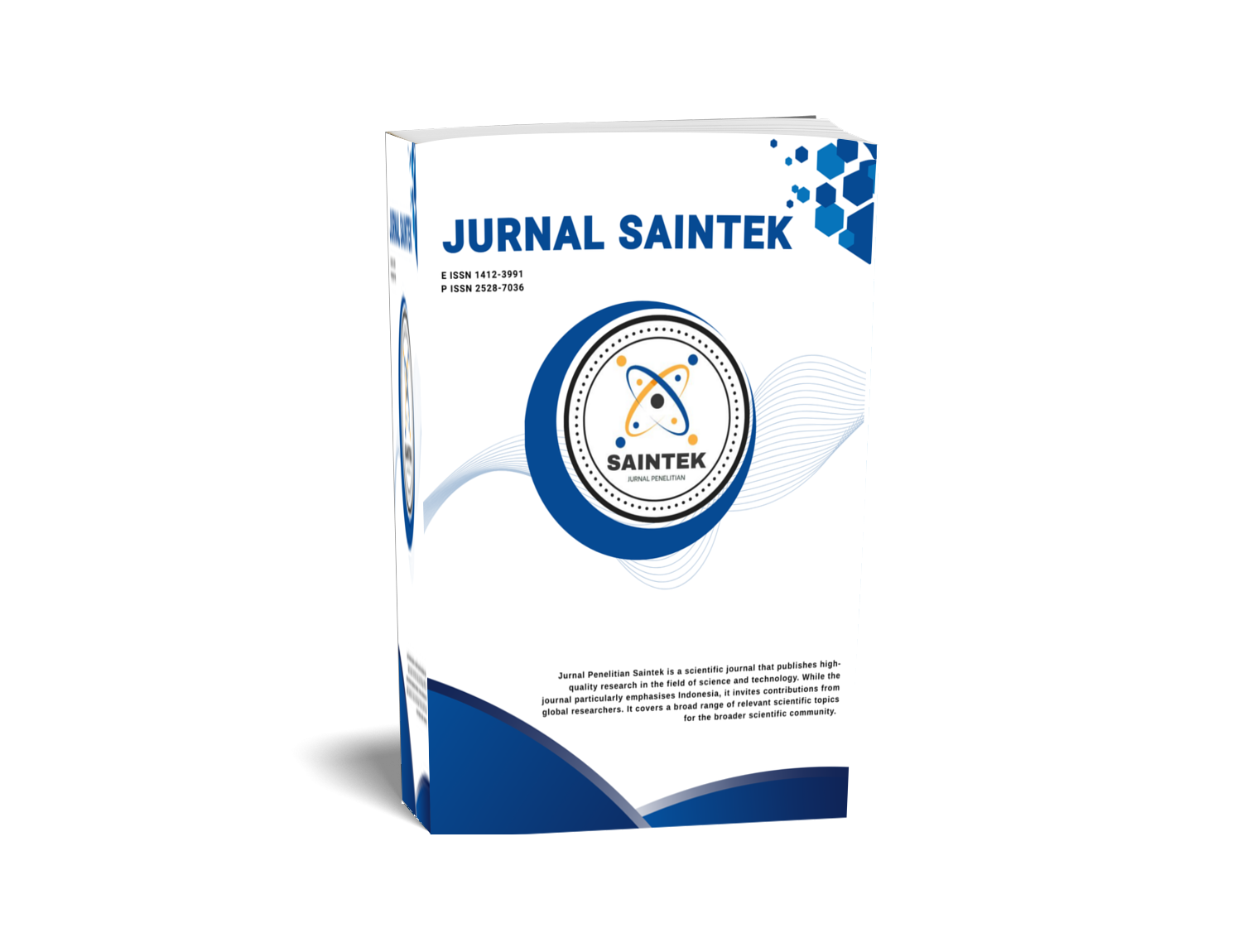EVALUATION OF YIELD SEDIMENT IN FLOW AREA RIVER RIVER PART IN ESTABLISHING THE REST OF DADMA WAREHOUSE
DOI:
https://doi.org/10.21831/jps.v13i1.182Abstract
The objective of this research are to: 1). Knowing the level of erosion that happened in the upstream of Cisanggarung Catchments' area. 2). Knowing the level of Sediment Yield in Darma reservoir. 3). Determining the estimation age left Darma reservoir.
This is the explorative research. Data collecting was conducted with observation method and documentation. Calculating of total erosion summing factors from surface erosion with dale erosion and channel erosion which level of is 25% from surface land;ground erosion that is using Universal approach [of] Soil Loss Equation ( USLE), while calculation of total erosion that is factor losing of land;ground. Erosion enabled to be to be analysed by conversion each;every land;ground erosion criterion enabled with tables guidance of stipulating of value of T for land;ground in Indonesia, is later;then multiplied 10 and land;ground volume weight. Analyse Sediment Yield [counted/calculated] high [of] water [at] highest terendah level until, river stream debit when different, and high [relation/link] and debit irrigate to adrift sediment ( Load Suspended) and sediment creep ( Bed Load), and also debit [relation/link] irrigate with Sediment Yield. Rest of Accumulating basin of Darma known from sediment amount closing over dead accommodation
Result research of menunjukan that surface land;ground erosion storey;level that is 31.558,74 ton / year, or mean 573,795 ton/ha/tahun, total erosion 39.448,43 ton / year or 717,244 enabled land;ground erosion and ton/ha/tahun that is 686,033 ton / year or [about/around] 12,473 ton/ha/tahun. datas [of] menunjukan that surface erosion storey;level and total erosion take place big compared to high enough [of] enabled erosion. annual Sediment Yield [in] Accumulating basin of Darma that is 32.996,419 ton / year or 14.873,660 m3. Accumulating basin of Darma cannot function again that is at the (time) of reaching umur ± 84,25 year. Year 2006 Accumulating basin of Darma have operated during 36 year so that the rest of Accumulating basin of Darma fufilled [by] dead accomodation him by sediment that is ± 48,25 dead accomodation or year will loaded full (of) that is [at] year ± 2054.
References
Anonim. (1977). Risalah Waduk Darma. Kuningan: Dinas Pekerjaan Umum Kabupaten Kuningan
Bintarto, R. (1982). Metode Analisa Geografi. Yogyakarta: Gadjah Mada University Press.
Chay Asdak. (1995). Hidrologi dan Pengelolaan Daerah Aliran Sungai. Yogyakarta: Gadjah Mada University Press.
Ersin Seyhan. (1997). Dasar-dasar Hidrologi. Yogyakarta: Gadjah Mada University Press.
Foth. D. Henry. (1998). Dasar-dasar Ilmu Tanah. Yogyakarta: Gadjah Mada University Press.
Jamulyo dan Sutanto. (1993). Pengantar Geografi Tanah. Yogyakarta: Fakultas Geografi Universitas Gadjah Mada.
Kartasapoetra A.G., Gunarsih K. dan Mul Mulyani. (2000). Teknologi Konservasi Tanah dan Air. Jakarta: Rineka Cipta 62 Evaluasi Sediment Yield di Daerah Aliran Sungai Cisanggarung Bagian Hulu dalam Memperkirakan Sisa Umur Waduk Darma (Muhammad Nursa'ban)
Kirkby, M.J. and Morgan, R.P.C. (1980). Soil Erosion. Harlow, England: John Wiley and Son Linsley, J.G. (1949). Hydrology For Engineering. USA: Prentice Hall
Mohammad Arief Ilyas dan T. Budiharjo. (2002). "Tinjauan Pengaruh Erosi-Sedimentasi dan Upaya Konservasi Pada Beberapa Waduk di Pulau Jawa". Prosiding Simposium Nasional Pencegahan Bencana Alam Sedimen. Yogyakarta: ISDM Project.
Morgan, R.P.C. (1995). Soil Erosion and Conservation. England: Longman, Silsoe College and Cranfield University Muhamud Nabalegwa. (2000). "Soil Conservation As An Effort To Attain Sustainable Development In Sermo Reservoir Catchment Area.". Disertasi. Yogyakarta: Gadjah Mada University Notohadiprawiro, R.M. dan Tedjoyuwono. (1981). Dampak Pada Tanah dan Tata Ruang. (Kursus Dasar-Dasar Analisis Mengenai Dampak Lingkungan). Yogyakarta: PPLH UGM dan KMN KLH.
Otto Sumarwoto. (2001). Analisis Mengenai Dampak Lingkungan. Yogyakarta: Gadjah Mada University Press.
Pabundu Tika. (1997). Metode Penelitian Geografi. Jakarta: Gramedia Pustaka Utama
Poerwadarminta, W.J.S.. (1984). Kamus Bahasa Indonesia. Jakarta: Balai Pustaka.
Rini Wudianto. (2000). Mencegah Erosi. Jakarta: Penebar Swadaya. Saifudin Sarief. (1986). Konservasi Tanah dan Air. Bandung: Pustaka Buana.
Sarwono Hardjowigeno. (1993). Klasifikasi Tanah dan Pedogenesis. Jakarta: Akademika Pressindo.
Schmidt F.H. dan J.H.A. Ferguson (1951). Rainfall Types Based on Wet and Dry Periode Ratios For Indonesia with Western New Guinea. (cetak ulang). Djakarta: Kementrian Perhubungan Djawatan Meteorologi dan Geofisika. Verhandelingen No. 42.
Sitanala Arsyad. (1989). Konservasi Tanah dan Air. Bogor: Penerbit IPB.
Suharsimi Arikunto. (1996). Prosedur Penelitian Suatu Pendekatan Praktis. Jakarta: Bina Aksara.
Supranto, J. (1974). Metode Pengumpulan Data dan Beberapa Teknik Sampling. Majalah Manajemen dan Usahawan Indonesia, X, hlm. 56.
Syah A.R.. (1995). Penentuan Erosi dan Sedimentasi Pada Daerah Aliran Sungai (DAS). Jambi: Majalah Ilmiah Universitas Jambi Nomor 45
Totok Gunawan. (1995). Penginderaan Jauh Terapan untuk Studi Ekologi dan Pengelolaan Daerah Aliran Sungai. Yogyakarta: Program Pasca Sarjana Universitas Gadjah Mada.
Van Bamellen. (1949). The Geology of Indonesia Volume IA. General Geologi of Indonesia and Adjacent Archipleago. The Hague: Government Printing Office Wani Hadi Utomo. (1989). Konservasi Tanah di Indonesia Suatu Rekaman dan Analisa. Jakarta: Rajawali Press.
Wiscmeier, W.H. dan D.D.Smith. (1978) Predicting Rainfall Erosion Losses: A Guide To Conservation Planning. Agriculture Handbook No.282. United States Department in Coorporation With Purdue Agricultural Experimental Station.
Downloads
Published
How to Cite
Issue
Section
Citation Check
License
Who Can Submit?
Any individual may submit an original manuscript for consideration for publication in Jurnal Penelitian Saintek as long as they hold the copyright to the work or are authorized by the copyright owner(s) to submit it. Authors retain initial ownership of the copyrights to their works prior to publication, except in cases where, as a condition of employment, they have agreed to transfer copyright to their employer.
User Rights
Jurnal Penelitian Saintek is an Open Access journal. Users are granted the right to read, download, copy, distribute, print, search, or link to the full texts of articles, provided they comply with the conditions of the Creative Commons Attribution-ShareAlike License 4.0 (CC BY-SA 4.0).
https://creativecommons.org/licenses/by-sa/4.0/
Author Rights
Authors retains copyrights.
Jurnal Penelitian Saintek by http://journal.uny.ac.id/index.php/saintek is licensed under a Creative Commons Attribution-ShareAlike 4.0 International License.










